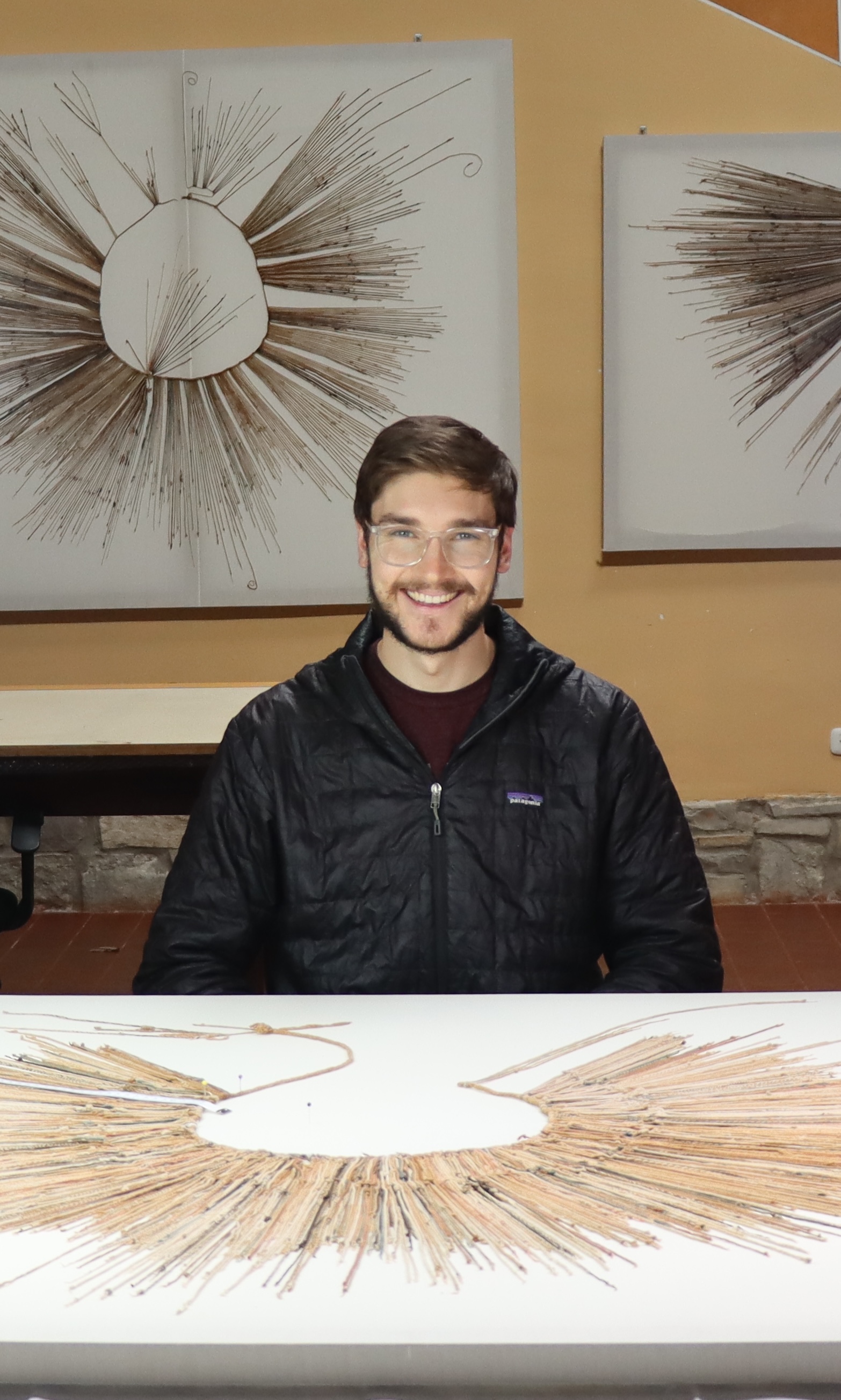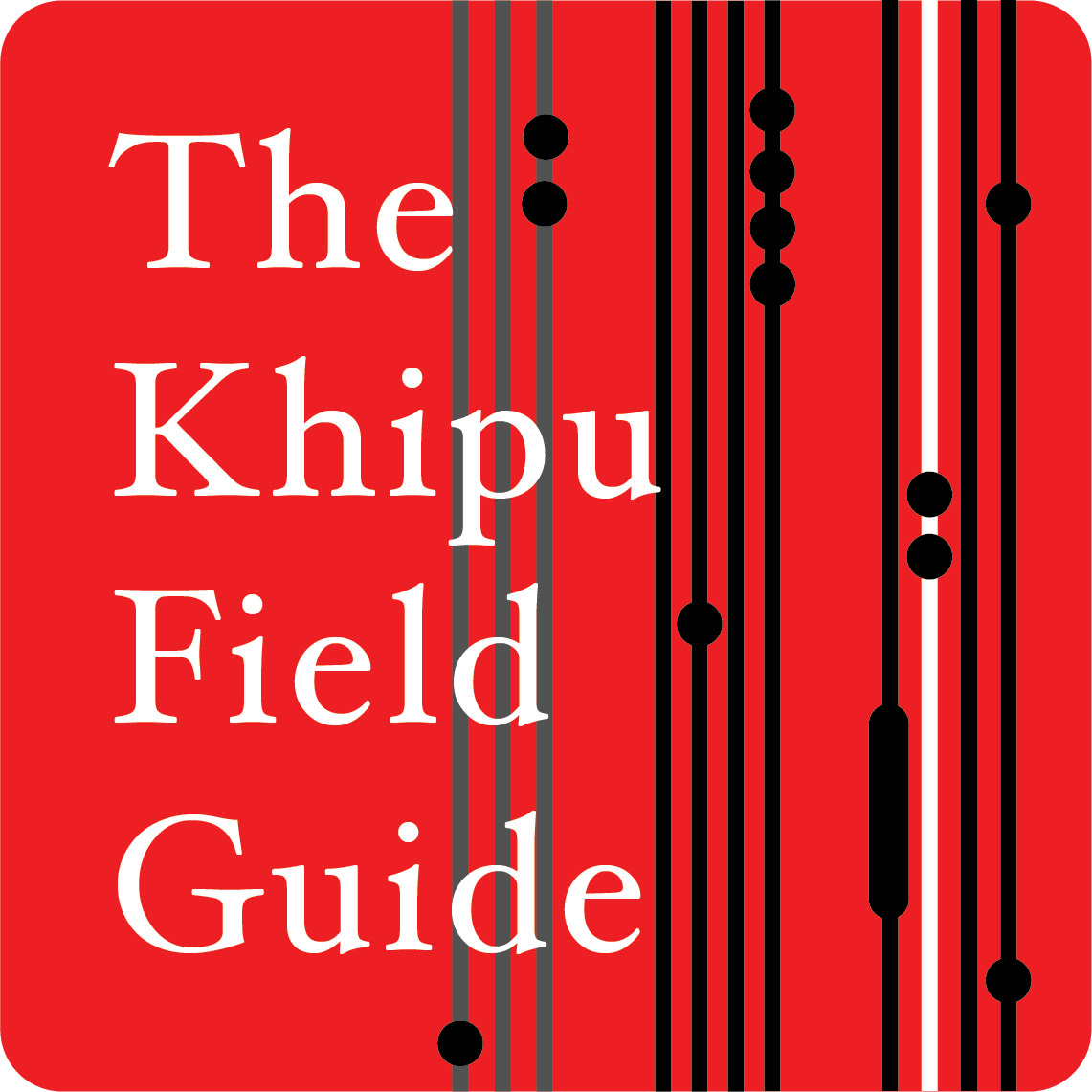About The Khipu Field Guide
The Khipu Field Guide Affiliates
Started in the isolating tedium of Covid-19, in 2020, the Khipu Field Guide has allowed scholars the opportunity to take on a big, hairy audacious goal - khipu decipherment at scale. After the first set of drawings were made in late 2020, khipu decipherer and historian Manuel Medrano joined me while he was finishing his first stint at Harvard. Since then, our team of enthusiastic khipu researchers has been growing!
The Khipu Field Guide Affiliates are (in historical order):
 Ashok Khosla Ashok Khosla
|
Ashok Khosla is the creator and editor of the Khipu Field Guide (KFG). Using the KFG, Manuel Medrano and Ashok cowrote the article "How Can Data Science Contribute to Understanding the Khipu Code?" published in Latin American Antiquity. Spanning a background in both computer graphics and computational linguistics, Ashok has been awarded 13 patents in both fields. He spent 1985-2015 as a software executive, building international high-tech companies in Silicon Valley. At Apple, he served as chief engineer for its graphics products, including MacPaint and MacDraw, and later led part of Apple’s international development as Managing Director of Apple India and General Manager of Apple China. His computational linguistic skills have been used to build products and companies that have successfully sold to the translation market, the telco anti-spam market, and the enterprise speech-recognition market. Ashok has working language skills in Mandarin Chinese, Spanish, and Quechua. Much of his scientific and mathematical career has alternated with art, including as a practicing architect, sculptor, and photographer. An avid naturalist and birder, Ashok has taught wildlife photography, including at the University of Alaska, and was an Alaskan wildlife guide for a decade. He lives in a redwood forest in Mendocino, California, with his wife, Andean cinema scholar, Dr. Diana Coryat. |
 Manuel Medrano Manuel Medrano
|
Manuel (Manny) Medrano is a PhD student candidate in Latin American History at Harvard University. In 2022, he completed an MPhil in Social Anthropology at the University of St Andrews, where he was a Marshall Scholar. He also holds a BA in Applied Mathematics from Harvard College, magna cum laude with highest honours (2019). At Harvard, Manny studies texts, artifacts, and scientific practices from the pre-Columbian Americas (especially the Andes) and the history of their transmission, reception, and study around the world. In addition to ongoing quipu decipherment efforts, Manny studies quipus held in worldwide collections. He is the author of Quipus: Mil años de historia anudada en los Andes y su futuro digital (Quipus: A Thousand Years of History Knotted in the Andes and its Digital Future), a Peruvian National Literature Prize-nominated book on the state of the field (Planeta, 2021). Manny’s research has been featured by NPR, Google Arts & Culture, the Boston Globe, CBC, iHeartRadio, and NewScientist, among other outlets. |
 Kylie Quave Kylie Quave
|
Kylie Quave is Associate Professor of Writing and of Anthropology at the George Washington University. As an anthropological archaeology PhD, she studies how marginalized populations under Inka imperialism and Spanish colonialism made communities and forged identities to adapt to changing political and economic conditions. As a science writing professor, she researches issues with knowledge production relative to how we know what we “know” about the human past and directs a long-term project on inclusive and equitable pedagogies in anthropology: Past for the Future. Kylie entered anthropology via art history, which led her to study khipu and Andean textiles in museum collections in the US. Kylie enjoys volunteering for Skype A Scientist and Letters to a Pre-Scientist. She is an avid recreational weightlifter, lover of foraging, and joins too many book clubs. |
 Di Hu Di Hu
|
Di Hu is an assistant professor of Anthropology at James Madison University. Using a combination of environmental archaeology methods such as geospatial analysis, geochemical analysis, starch grain analysis, and archival research, she investigates the social landscapes of collective political action, such as the rise of states, coordinated rebellions, and the emergence of new group identities in South America. Her research highlights the key role that social landscapes—the organization of social relations over the landscape—play in facilitating collective struggles to control one’s own labor, ritual landscape, and ecological/food resources. Her regional area of expertise is the Andes, and she adopts intersectional theoretical frameworks. She believes in open science and the democratization of digital humanities and digital social science research. In addition to supporting Ashok Khosla’s work on the Khipu Field Guide, she is also leading a project in digitizing historical censuses and creating an open-source tool that allows for the visualization of kinship networks, demographic data, and landscapes of surname similarity. |
 Karen Thompson Karen Thompson
|
Karen M Thompson is a Senior Research Data Specialist at the Melbourne Data Analytics Platform (MDAP) at the University of Melbourne, Australia. She has a Bachelor of Science (1993) in Mathematics from the University of Queensland, was a Fellow of the Institute of Actuaries of Australia (2003-2021), has a Bachelor of Fine Arts (2006) in Gold and Silversmithing from Royal Institute of Technology in Melbourne, and a Masters in Cultural Materials Conservation (2018) from the University of Melbourne. She has a passion for data organisation, communication, and working at the intersection of data and cultural collections. https://orcid.org/0000-0002-5498-0556 Karen’s work on the KFG Ascher khipus led to her discoveries that the famous Dauelsberg AS069 (the largest recorded khipu) and AS070 relate to each other. The work was recently published in the archaeological journal Nawpa Pacha and described for the public in The Conversation, a magazine about scientific research. |
 Saoirse Byrne Saoirse Byrne
|
Saoirse Byrne is an artist, craftsperson and designer with a deep love and curiosity for the ancient process of cordage and its application across cultures and time. She trained as a fashion designer with a BFA from Rhode Island School of Design and graduated with an MBA in Sustainability from Presidio World College in San Francisco among the pioneering cohort. Saoirse brings a maker’s perspective to the team. Her exploration of cordage began in 2012 with ancestral skills gatherings and learning to twist wild harvested plants with Tamara Wilder. She applied the process to the abundance of fabrics in her studio. In transforming her great grandmother’s threadbare handkerchief into cordage it became a necklace. Saoirse has since developed a practice of creating wearable art jewelry from fabric cordage and teaching others how to transform their sentimental fabrics into meaningful cordage. Her work can be seen at the Museum of Craft and Design in San Francisco and at www.saoirsebyrne.com. |
 Mack FitzPatrick Mack FitzPatrick
|
Mackinley “Mack” FitzPatrick is an Archaeology Ph.D. candidate in the Department of Anthropology at Harvard University. He earned his B.A. in Computer Science with a minor in Archaeology from Harvard University in 2020 and subsequently received his M.A. in Anthropology from Harvard in 2022. Mack’s research centers on the study of ancient media using big data and computational methods, with his primary focus being on the Andean khipu (or quipu). Mack employs a chaîne opératoire approach to understand and decipher these cords, examining the sequential steps and decisions involved in their creation. Beyond decipherment, Mack’s research aims to understand the khipu construction process and the individuals who crafted them. He believes these artifacts have stories beyond the ones encoded in their knots. His work also focuses on digitally preserving khipus for future generations and their descendants. By cataloging detailed structural data down to each individual yarn, Mack ensures that the cultural knowledge within khipus is preserved, even if the physical artifacts cannot be maintained indefinitely. Mack’s dissertation work focuses on 33 Inka khipus discovered in cliffside tombs at Laguna de los Cóndores in the highland jungle of Peru. These khipus, found alongside textiles, ceramics, wooden objects, and over 200 mummy bundles, form an extraordinarily rare collection. They not only feature some of the largest and most intricate extant khipu specimens but also are notable for having a known archaeological context—a rarity, as many khipus were looted in the early 20th century. Furthermore, these khipus constitute one of the few known khipu archives, allowing for their study as a cohesive group. For his dissertation, Mack is conducting a comprehensive analysis of the khipus from Laguna de los Cóndores, which are now housed at the Museo Leymebamba in Peru. His innovative methodology facilitates the study of even fragmented khipus by recording details about cord construction, materials, and structures often overlooked by previous studies. His dissertation aims to illuminate how data was encoded in khipus, how Inka imperial control manifested at the local level, and to explore gender roles in Andean craft production. Outside of fieldwork and research, he actively shares his work with the public through initiatives like the Virtual Archaeologist in a Classroom program, offered by the Harvard University Peabody Museum of Archaeology and Ethnology. Mack is committed to collaborating with descendant communities and preserving cultural heritage for future generations.Mack’s latest paper New Insights on Cord Attachment and Social Hierarchy in Six Khipus from the Santa Valley, Peru was just published in the October 2024 issue of EthnoHistory. |
The team is also indebted to:
- Sabine Hyland who has so inspired so many of us, and who has been unquestioningly generous with her wisdom and support, and for her khipus! Añaypas Yachachiq.
- Jon Clindaniel who was one of the first archaeologists/computational anthropologists to use modern data science techniques on khipus. Jon’s support has been invaluable in the production of this field guide.
